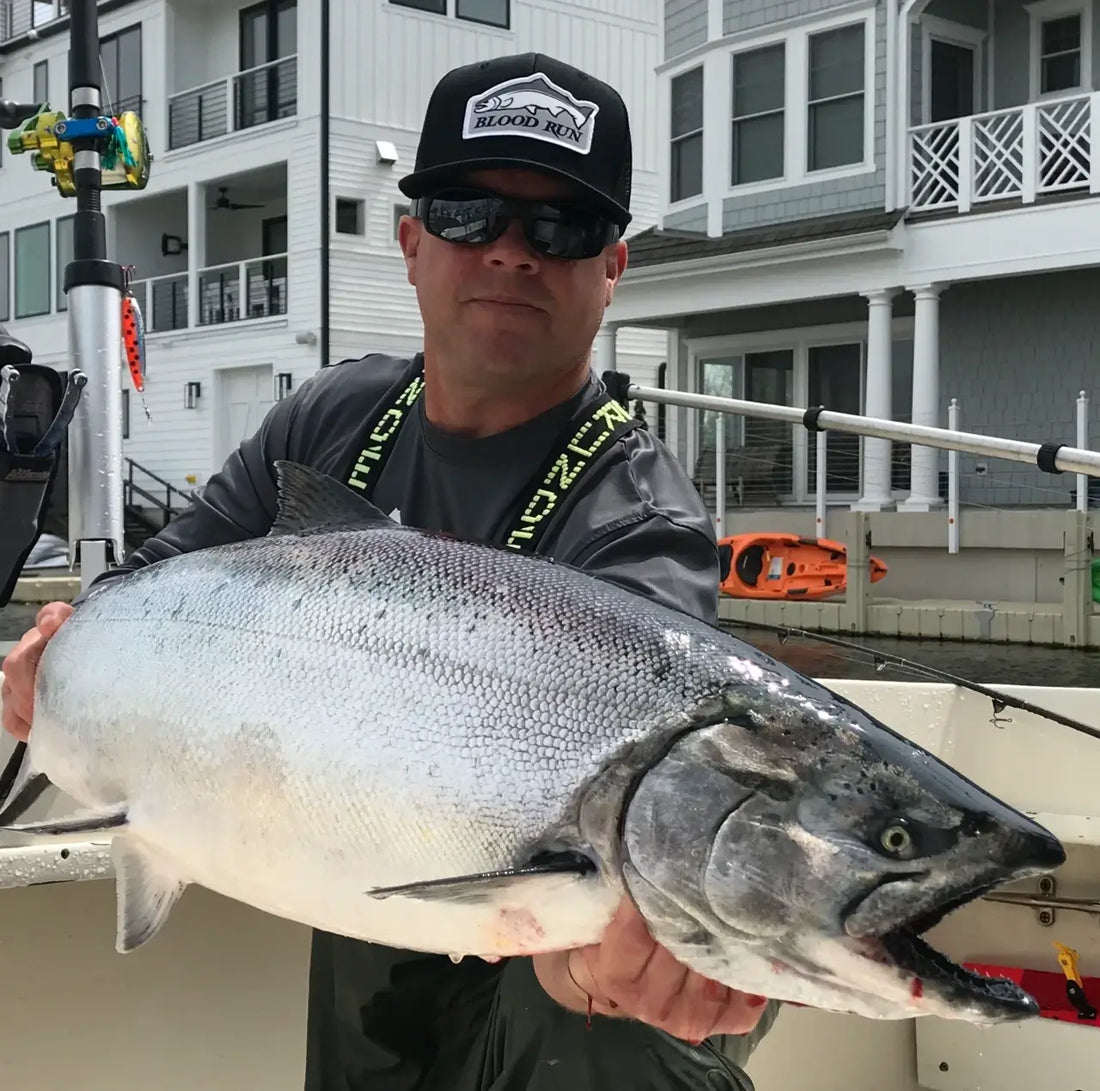Having fished around the country with numerous Blood Run Pro Staff members for various species including Tuna, Striper, Salmon, Wahoo, Walleye and Kingfish, without a doubt I am still convinced we fish the most complicated program in the world. In no other fishery will you find boats pulling 12 + rods with multiple line types with wire, braid, mono, fluorocarbon, copper or leadcore. But the most interesting conversations I have with anglers around the country is undoubtedly the topic of fishing copper off inline boards.
Even to the East over in Lake Ontario, copper is still more of an afterthought than a necessity to a fishing program like we fish here on Lake Michigan. With most boats pulling three to four boards a side, there is probably more copper deployed in Lake Michigan on any given weekend than any other line type, and with good reason.
The Science: There are actually several good reasons as to why copper is as effective as it is. We hear the common statements about stealth and deploying less line out than leadcore to reach similar depths...but it actually goes much further than that. Copper in itself is a very different animal compared that of even leadcore. The primary reason for the success of copper is its ability to cut through underwater currents to fish at desired depths. Copper has far less drag in the water than that of leadcore, which allows it to penetrate through different current and temperature layers to get where active fish are feeding. It also has the benefit of tracking straight behind your boat/boards, rather than wandering in the current and waves like leadcore. Any serious fisherman knows that pulling your gear straight and in an consistent manner in relation to the current is key to any amount of regular success.
The key here is pulling all of the same style and model of inline planer boards. The right board matched with the right copper segment will allow you to track your lines straight.
Leadcore has its place, when snaking and drifting are desired. We still deploy 2 and 3 color setups ourselves in front of large river systems or offshore targeting steelhead where we may circle troll more frequently. Here, rather than in a straight-line open water trolling scenario, lead core continues to shine.
The Line: There are subtle differences between “light” and “heavy” copper. Often found in 32lb configuration, “light” copper has the benefit of being extremely user friendly, particularly for those fishing copper for the first time. It has a smaller diameter, and passes through line guides and levelwinds quickly and easily.
“Heavy” copper found in 45lb weights, has a larger diameter and sinks faster in turning situations than light copper. Truth be told, in open water straight-line trolling situations, light and medium copper pull to nearly identical depths down to 100 feet within about 5-7 feet of one another. The lighter copper with its smaller diameter actually cuts through the water quicker, attaining deeper depths. We personally fish almost all 32lb copper on our boats with rare exception, which allows our customers to send the user friendly copper rigs back out while we are setting other lines.
The Voodoo: Copper has come a long way since the original piano wire style copper we fished in the early 2000’s. Much if not all of the copper found on the market around Lake Michigan today is silver colored copper, which is actually a plating comprised of nickel and tin. The reason is not for “bling”, but for corrosion resistance and pliability. The plating actually absorbs heat and softens the copper core, allowing for greater pliability and useability.
And of course we know that copper is a highly conductive metal. The debate is still ongoing as to whether the copper actually conducts positive electrical current from the boat to charge the water to attract fish. We know that in saltwater this is true, it may also be true to some extent in freshwater.
The End Game: Copper makes us all better fishermen. It tracks straight behind the boat cutting correctly through the current. It allows us to deploy significantly more tackle in the water to widen and deepen our spreads. It allows us to probe different layers of the water column looking for different target species or out of temperature fish during tournaments. And it flat out produces when almost nothing else will.

